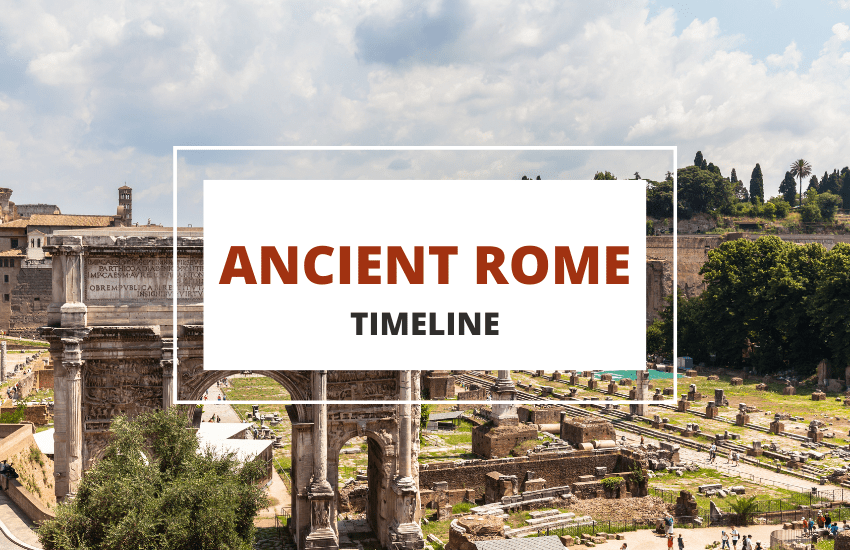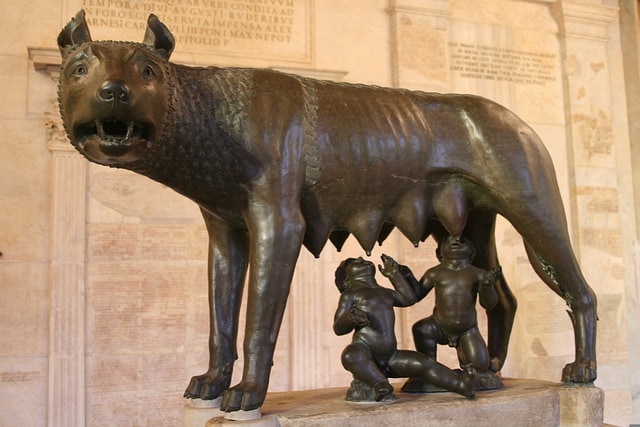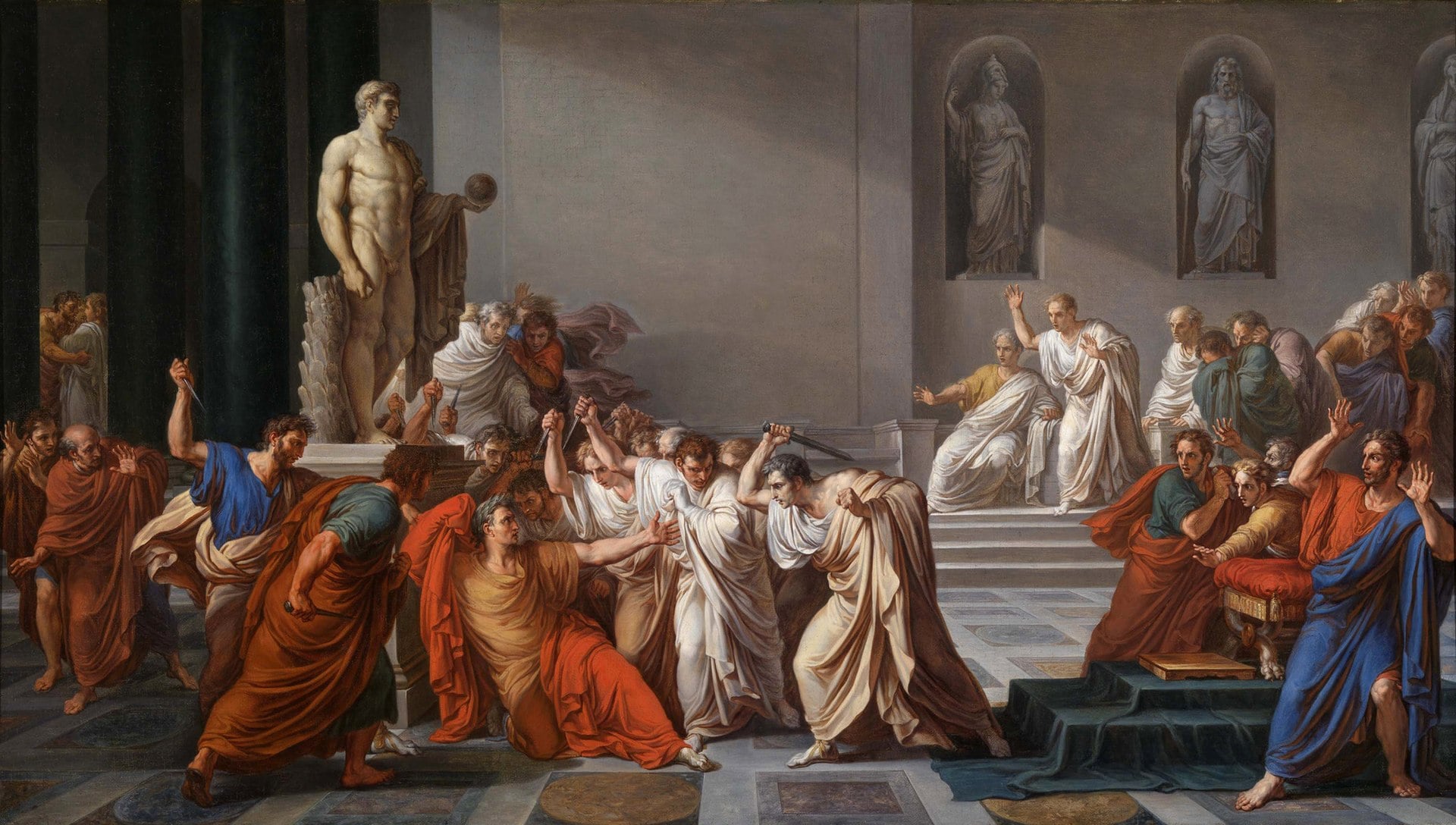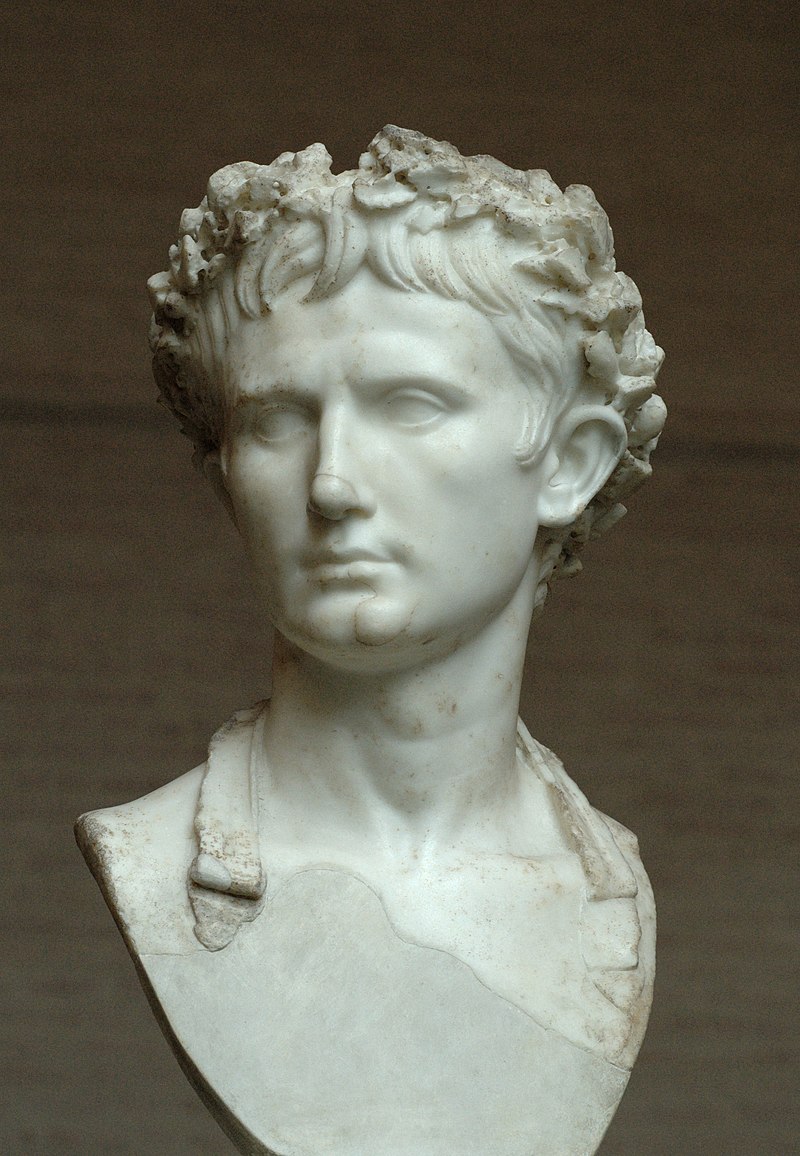
Table of Contents
Unlike other classical civilization timelines, most events in Roman history are perfectly dated. This is partly due to the passion the Romans had for writing things down, but also because their historians made sure to document every single fact about Roman history. From its inception in the times of Romulus and Remus, to the demise of the Western Roman Empire in the 5th century CE, there is a clear account of everything.
For completeness purposes, we will include in our timeline some of the history of the so-called Eastern Roman Empire, but it should be stated that the Byzantine Empire is a far cry from the classical Roman tradition that started with Romulus betraying his brother Remus.
Let’s take a look at the ancient Roman timeline.
Roman Kingdom (753-509 BCE)

According to the myth described in the Aeneid, the early Romans settled in the Latium region. Two brothers, Romulus and Remus, direct descendants of the Greek hero Aeneas, were supposed to build a city in the region.
There were two problems in this sense:
First, that the area next to the Tiber River was already populated by the Latin, and second, that the two brothers were also rivals. Following the failure to follow ritual rules by Remus, he was killed by his brother Romulus, who went on to found Rome in an area known as the Seven Hills.
And according to myth, also, this city was bound for a glorious future.
753 BCE – Romulus founds the city of Rome and becomes the first king. The date is provided by Vergil (or Virgil) in his Aeneid.
715 BCE – The reign of Numa Pompilius starts. He was known for his piety and love for justice.
672 BCE – The third king of Rome, Tullus Hostilius, comes into power. He waged war against the Sabines.
640 BCE – Ancus Marcius is king of Rome. During his reign, the plebeian class of Romans formed.
616 BCE – Tarquinius becomes king. He built some of Romans early monuments, including the Circus Maximus.
578 BCE – Reign of Servius Tullius.
534 BCE – Tarquinius Superbus is proclaimed king. He was known for his severity and for the use of violence in controlling the population.
509 BCE – Tarquinius Superbus goes into exile. In his absence, the people and senate of Rome proclaim the Republic of Rome.
Roman Republic (509-27 BCE)

The Republic is probably the most studied and known period in Roman history, and for a good reason. It was indeed in the Roman Republic that most of the cultural traits we now associate to ancient Romans were developed and, although not at all devoid of conflict, it was a period of both economic and social prosperity that shaped Rome for all its history.
494 BCE – Creation of the Tribune. Plebeians separate themselves from Rome.
450 BCE – The Law of the Twelve Tables is passed, stating the rights and duties of Roman citizens, with the intention of countering the agitation among the plebeian class.
445 BCE – A new law allows for marriages between patricians and plebeians.
421 BCE – Plebeians are granted access to quaestorship. A quaestor was a public official with different tasks.
390 BCE – Gauls take Rome after defeating their army in the battle of Allia River.
334 BCE – Finally, peace is achieved between Gauls and Romans.
312 BCE – Construction of the Appian Way starts, connecting Rome with Brindisium, in the Adriatic Sea.
272 BCE – Rome’s expansion reaches Tarentum.
270 BCE – Rome finishes the conquest of Magna Graecia, that is, the Italian peninsula.
263 BCE – Rome invades Sicily.
260 BCE – An important naval victory over Carthage, that allows for further expansion of Romans in Northern Africa.
218 BCE – Hannibal crosses the Alps, beats the Romans in a series of cruel battles.
211 BCE – Hannibal reaches the gates of Rome.
200 BCE – Roman expansion to the West. Hispania is conquered and divided into a series of Roman provinces.
167 BCE – Now that there is a considerable subject population in the provinces, Roman citizens are exempted from paying direct taxes.
146 BCE – The destruction of Carthage. Corinth is pillaged, and Macedonia is incorporated to Rome as a province.
100 BCE – Julius Caesar is born.
60 BCE – The first Triumvirate is created.
52 BCE – After the death of Clodius, Pompey is named sole Consul.
51 BCE – Caesar conquers Gaul. Pompey opposes his leadership.
49 BCE – Caesar crosses the Rubicon River, in an openly hostile action against the government of Rome.
48 BCE – Victory of Caesar over Pompey. This year, he meets Cleopatra in Egypt.
46 BCE – Finally, Caesar returns to Rome and is awarded unlimited power.
44 BCE – Caesar is killed during the Ides of March. Years of turmoil and political uncertainty begin.
32 BCE – A Civil War starts in Rome.
29 BCE – In order to restore peace in Rome, the senate proclaims Octavius as sole ruler over every Roman territory.
27 BCE – Octavius is awarded the title and name of Augustus, becoming emperor.
Roman Empire (27 BCE – 476 CE)

Four civil wars were fought by citizens and the military in the Roman Republic. In the following period, these violent conflicts seem to relocate to the provinces. Emperors ruled over the Roman citizens under the motto of bread and circus. As long as the citizenship has access to both, they would stay humble and subject to the rulers.
26 BCE – Mauritania becomes a vassal kingdom to Rome. Rome’s rule over the Mediterranean area seems complete and uncontested.
19 BCE – Augustus is awarded the Consulate for life, and also the Censorship.
12 BCE – Augustus is proclaimed Pontifex Maximus. This is a religious title that is added to the military and political titles. He alone concentrates all the power in the empire.
8 BCE – Death of Mecenas, the mythical protector of artists.
2 BCE – Ovid writes his masterpiece, The Art of Love.
14 CE – Death of Augustus. Tiberius becomes emperor.
37 CE – Caligula ascends the throne.
41 CE – Caligula is assassinated by the Praetorian guard. Claudius becomes emperor.
54 CE – Claudius is poisoned by his wife. Nero ascends the throne.
64 CE – Burning of Rome, commonly attributed to Nero himself. First persecution of Christians.
68 CE – Nero takes his own life. The following year, 69 CE, is known as the “year of the four emperors”, as no one seemed to be able to hold on to power for long. Finally, Vespacian ends the short civil war.
70 CE – Destruction of Jerusalem. Rome starts building the Colosseum.
113 CE – Trajan becomes emperor. During his rule, Rome conquers Armenia, Assyria, and Mesopotamia.
135 CE – A Jewish rebellion is suffocated.
253 CE – Franks and Allemanni attack Gaul.
261 CE – The Allemanni invade Italy.
284 CE – Diocletian becomes emperor. He names Maximinian as Caesar, installing a Tetrarchy. This form of government divides the Roman empire into two, each with its own Augustus and Caesar.
311 CE – Tolerance edict signed in Nicomedia. Christians are allowed to build churches and hold public meetings.
312 CE – Constantinus defeats Majentius in the battle of Ponto Milvio. He claimed it was the Christian god who helped him win the battle, and subsequently joins this religion.
352 CE – New invasion of Gaul by the Allemanni.
367 CE – The Allemanni cross the river Rhine, attacking the Roman empire.
392 CE – Christianism is proclaimed the official religion of the Roman empire.
394 CE – Partition of the Roman empire in two: Western, and Eastern.
435 CE – The last duel of gladiators is performed in the Roman Colosseum.
452 CE – Attila the Hun sieges Rome. The Pope intervenes and convinces him of retreating.
455 CE – Vandals, led by their leader Gaiseric, ransack Rome.
476 CE – King Odoacer deposes Romulus Augustus, the last emperor of the Roman Empire.
The Last Event of the Ancient Roman Civilization
The Romans grew from a single lineage –that of Aeneas – into the most powerful empire in the West, only to topple down after a series of so-called invasions by so-called barbaric peoples.
In the meantime, it was home to kings, rulers elected by the people, emperors, and dictators. While its heritage continued in the Eastern Roman Empire, the Byzantines can hardly be considered Romans, as they speak another language, and are Catholic.
This is why the fall of Rome in the hands of Odoacer can be considered the last event of the ancient Roman civilization.





